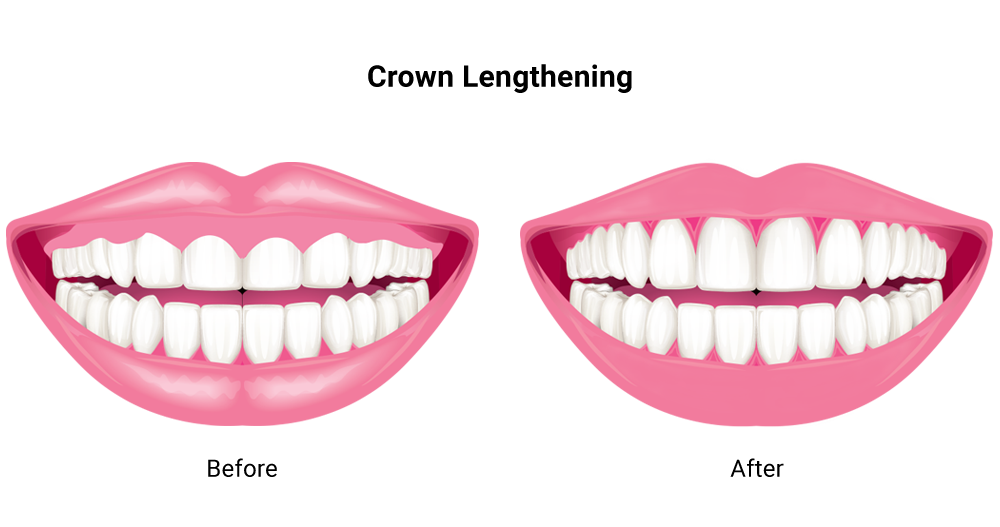Gum Surgery Types
While scaling and root planing and other types of gum therapy can help treat mild to moderate cases of gum disease, advanced periodontal disease may only be effectively treated with gum surgery. Periodontal surgery can help your dentist restore oral health and aesthetics to your gums. There are many types of gum surgery procedures being practiced, but your dentist will help you choose which treatment is right for you based on the condition of your smile and your desired outcomes. Treating advanced gum disease can help you improve your overall health, as gum disease has been linked to serious systemic diseases such as heart disease and diabetes. With the help of advanced technology, gentle techniques, and comfortable sedation, you can undergo surgery in less time and with less pain than ever before.
Chao Pinhole® Surgical Technique
For patients with gum recession, many doctors have begun to offer the Chao Pinhole Surgical Technique. This is a less invasive alternative to a traditional gum graft and allows your dentist to lift your gum tissue through a pinhole in your gums. The Chao Pinhole Surgical Technique does not require incisions or stitches, which can expedite your recovery time and minimize your level of discomfort.
Cosmetic Gum Contouring
Gum contouring, also known as a gum lift, is a surgical cosmetic procedure for patients who are unhappy with the size and proportion of their gums. Your dentist can conservatively reshape your gums with a laser or a conventional scalpel to help your teeth appear more prominent and restore balance to your smile. Many patients choose gum contouring as part of their cosmetic dentistry treatment to achieve the most comprehensive results.

During LANAP surgery, your dentist will use an FDA-approved laser to perform minimally invasive gum surgery and access infected gum tissue without incisions or stitches
Crown Lengthening
If you are receiving dental crowns but do not have enough exposed tooth surface to attach your crowns, your dentist may recommend crown lengthening. Similar to cosmetic gum contouring, this simple procedure can be accomplished with a laser or a scalpel and can help your teeth appear longer and more prominent. Undergoing a crown lengthening prior to dental crowns can help reduce the risk of a crown falling off and give you more room for proper oral hygiene.
Frenectomy
Appropriate for both adults and children, a dentist can perform a frenectomy to remove the connective tissue known as the frenum, which attaches the upper or lower lips to the gums. This tissue can cause functional and cosmetic concerns for patients. For example, an enlarged frenum can cause a gap between the two front teeth or affect your speech. The frenum can be removed with a scalpel or a laser, which can reduce your surgery and recovery time.
Impacted Tooth Exposure
If a tooth is trapped underneath the gums, a dentist can perform an exposure and bracketing of the impacted tooth. During this procedure, the dentist will lift up the gum at the impact site to expose the tooth. After accessing the impacted tooth, he or she will place a bracket around the tooth to gently force it into proper positioning.
Laser Gum Surgery
While a traditional pocket reduction surgery can help you achieve healthier and better-looking gums, many dentists now offer the Laser Assisted New Attachment Procedure, or LANAP®. During LANAP surgery, your dentist will use an FDA-approved laser to perform minimally invasive gum surgery and access infected gum tissue without incisions or stitches. The laser will precisely target infected gum tissue without damaging surrounding healthy tissue and break down bacteria to prevent future disease. The LANAP laser also promotes tissue growth and can help your gums properly reattach to your bone.
Pocket Reduction
This treatment for advanced gum disease is also known as gingival or gum flap surgery and may be necessary if you have periodontal disease that does not respond to scaling and root planing. After removing the plaque and tartar from your teeth, your dentist will create an incision on your gums to access the underlying tooth structure. He will then remove the infected gum tissue, address any bone damage, and remove bacteria that can cause future gum disease.
Soft-Tissue Grafting
Soft tissue grafting, also known as a gum graft or gum regeneration, may be a good option for patients who have receded gum tissue as a result of gum disease. During this procedure, your dentist will take a piece of tissue from your palate or another part of your mouth to restore it around the tooth. Adding tissue to the infected areas can help prevent further damage and reduce sensitivity.



